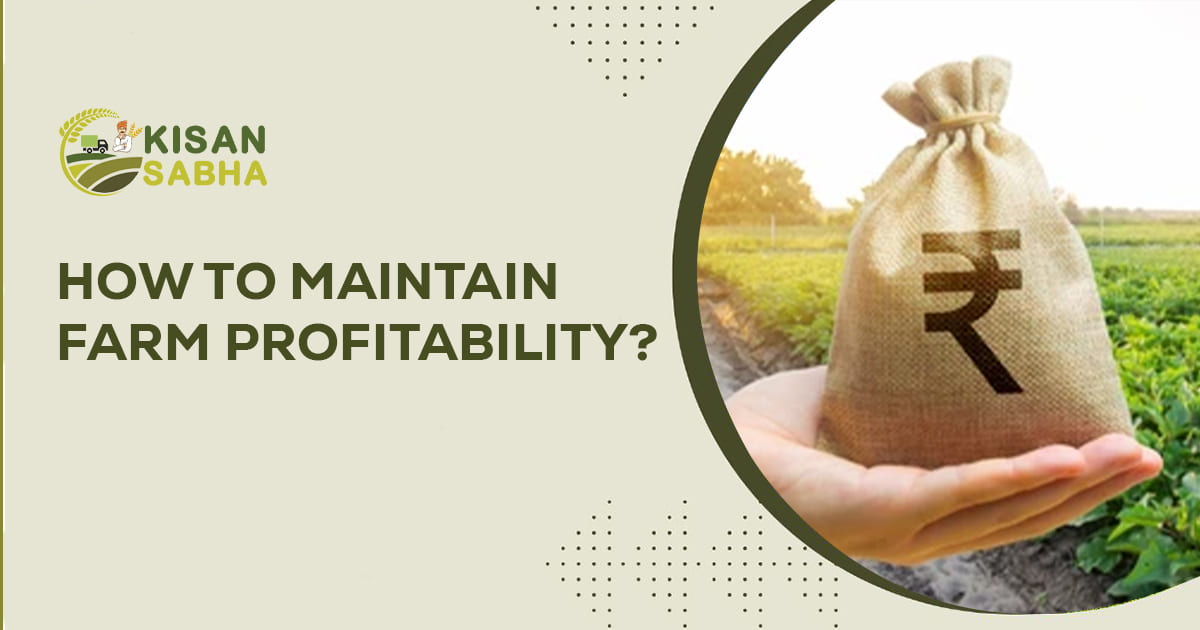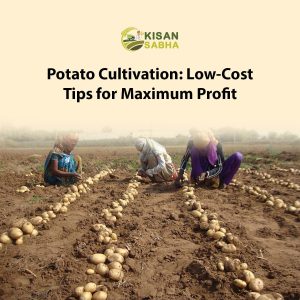Farming is a complicated endeavor that calls for not only a lot of effort and commitment but also wise money management. Protecting farm profitability is crucial to ensuring the viability and success of agricultural operations in a sector that is exposed to a variety of risks. This article examines important tactics that farmers can use to maintain their farm profitability and prosper in a changing agricultural environment.
Increase Crop and Livestock Production Diversity
Overdependence on a single crop or breed of livestock can put a farm at serious financial risk. Farm profitability may be affected by changes in market prices, weather patterns, and pest outbreaks. Diversification is essential to lowering these risks:
Crop rotation:- Changing the crops in your fields regularly can enhance soil quality, lower the risk of pest infestations, and maximize yields. Because different crops frequently have different market dynamics, you can benefit from advantageous prices for various commodities. Consider raising a variety of different livestock species. You might consider raising poultry, goats, or specialty animals like alpacas in addition to cattle, for example. Diverse livestock can offer a variety of income streams.
Specialty Crops:- Look into opportunities to grow high-value specialty or niche crops like organic produce, heirloom varieties, or therapeutic herbs. In regional or niche markets, these goods frequently command premium prices, potentially boosting profitability.
Adopt Sustainable Farming Methods
Sustainability is not only good for the environment, but it is also a major factor in modern agriculture’s profitability. Sustainable farming methods can increase a farm’s overall economic viability by lowering input costs, increasing resource efficiency, and reducing waste:
Organic farming:- Converting to organic farming methods may increase the cost of goods. The use of synthetic inputs like pesticides and fertilizers is decreased in organic farming, which ultimately lowers production costs.
No-Till and Reduced-Till Agriculture:- Using no-till or reduced-till techniques can lessen soil erosion, retain moisture, and cut back on the labour and fuel costs of plows and tillers.
Planting cover crops during fallow times can enhance soil quality, control weed growth, and lessen the need for herbicides. Additionally, it can raise the soil’s organic matter level, improving its long-term fertility.
Effective Water Management:- To maximize water effectiveness, install contemporary irrigation systems like drip or pivot irrigation. Farm profitability must be protected at all costs, especially in areas with limited water resources.
Also Read:- Five Ways To Manage Farm Work More Efficiently And Less Stressfully
Technology and Data Management Adoption
Technology and data management are heavily used in modern agriculture to streamline processes, cut waste, and boost farm profitability.
Farm Management Software:- Make record-keeping easier by using farm management software to schedule plantings, track input costs, and plan planting schedules. These tools offer insightful data on the productivity and profitability of your farm.
Use precision agriculture methods, such as GPS-guided tractors and drones, to streamline the planting, fertilization, and harvesting processes. This maximizes yields while minimizing input waste.
Weather Forecasting:- Use current weather information to plan irrigation, planting, and harvesting. Knowing when bad weather is coming can help you protect your crops and revenue.
Utilise technology to keep an eye on the health and welfare of your livestock. Early diagnosis of health problems can lower mortality rates and enhance the performance of the entire herd.
Investigate ways to incorporate supply chain technology, such as blockchain or online marketplaces, into your farm profitability. Better market access and transparency may result from this, which may raise the price of your products.
Lower Input Costs
For a business to remain profitable, especially when commodity prices are unstable, controlling input costs is crucial. The following are some tactics to reduce input costs:
Bulk Buying:- To benefit from volume discounts, buy inputs like seeds, fertilizer, and pesticides in large quantities. Cost-saving measures include negotiating advantageous conditions with suppliers.
Energy Efficiency:- Invest in energy-saving tools and procedures. This entails improving irrigation systems, utilizing energy-efficient lighting, and maintaining farm equipment to cut down on fuel usage.
Regular soil testing can help you identify the precise nutrients that your crops need, preventing you from applying too much fertilizer, which can be expensive and bad for the environment.
Maintain agricultural equipment properly to avoid breakdowns and expensive repairs. Regular inspections and scheduled maintenance can increase the lifespan of your equipment and help you increase your farm profitability.
Spread Out Your Income Streams
Beyond conventional farming methods, looking into additional revenue sources can help safeguard the profitability of your farm:
Agritourism:- If your farm has scenic or educational value, think about hosting agritourism events there. On-farm markets, pumpkin patches, corn mazes, and farm tours are a few examples of this. Agritourism not only increases revenue but also strengthens local support for your farm.
Online Sales:- Establish an online presence and use e-commerce platforms to sell your goods. Furthermore, your customer base may grow beyond regional markets due to online sales.
Conclusion
Prudent financial management, sustainable practices, technological integration, and diversification are all necessary to protect farm profitability. Farms can better prepare for the challenges of modern agriculture if they diversify their crop and livestock production, adopt sustainable farming methods, adopt technology for data management, minimize input costs, and investigate additional revenue streams.
However, to maintain farm profitability, your farming operation must manage costs, maximize income, and maintain long-term viability. Farms can prosper and ensure their financial security in an agricultural environment that is constantly changing by putting these strategies into practice and keeping an eye out for market trends and new business opportunities.




